By John Hunt:
Introduction
Last week’s ISIS raid on Kobane, with the murder of more than 240 civilians, was a fiendish reprisal for the humiliating defeat the jihadists had suffered the previous week when they were driven from Tel Abyad by the YPG, supported by US air strikes. The Kobane raid began, probably from inside Turkey, with a suicide bomb attack on the Mürşitpınar border gate. Reports indicate that the next major assault on Kobane, and on all of Rojava, could come directly from the Turkish army because President Erdogan is so alarmed by the liberation of Tel Abyad (called Girê Spî in Kurdish) and he clearly prefers to have ISIS (known locally as Daesh) on the border, rather than the secular YPG, even though it has been coordinating with Turkey’s NATO ally, the USA.
This is an eye-witness account, by the first writer from the British Isles to visit Tel Abyad after its liberation.
Corridor
Wednesday 17 June:
A large yellow and red YPG flag billows from a pole on the roundabout at the southern entrance to the town of Tel Abyad on Syria’s north-eastern border with Turkey. It has replaced the black and white emblem of ISIS, marking a big defeat for the jihadist group which has lost a direct supply route from Turkey to its unofficial capital, Raqaa, 87 km down the road. It’s a triumph for the mainly Kurdish YPG, defence force of the de-facto autonomous administration of Rojava. The YPG has waged a two-month campaign to take this strategically vital town, advancing through many villages on two fronts: from Rojava’s Jazeera canton in the west and its Kobane canton in the east, cutting into a malignant wedge of ISIS-held territory.
Before they entered Tel Abyad, YPG forces converged at the roundabout, opening up a corridor between two of Rojava’s three cantons. This triggered fiery celebrations in Kobane city, which emerged victorious but ruined from last winter’s ISIS seige and the ensuing US-led coalition air strikes and is still under an embargo by Turkey, which bars foreign visitors and chokes its access to vital aid.
“We are no longer surrounded”, says Kobane prime minster Anwar Muslim, referring to the sense of encirclement by ISIS and a hostile Turkish government on the northern border. The corridor should mean Kobane can get more supplies, including baby milk and medicines from Jazeera, which in turn shares a border with the Kurdistan Regional Government (KRG) in northern Iraq. “In some ways this is as important for us as defeating Daesh here in Kobane”, says a press office official.
Eastern Front
Sunday 14 June:
We leave Kobani’s suburbs of destruction, and drive across a flat, dry landscape, with swathes of burnt grass, passing liittle villages of mud houses and satellite dishes. Most of the 350 or so villages in Kobane canton have been liberated but, the farther east we go, the more recently this happpened, and the villagers who fled the jihadists’ onslaught haven’t yet returned. We stop at Koshka, near the edge of the canton, where a YPG flag flutters. The mostly young YPG fighters, male and female, can take a break here from the front line, a few kilometres away, or prepare to go there for the first time.
The women are in the YPJ, the autonomous female section of the YPG, and they stay in separate quarters, although men and women often fight together in the same brigades. When we reach Tel Abyad, a French YPG volunteer tells us that, in his experience of fighting alongside them since April, the YPJ women “do everything the men do and they are a bit more disciplined”. Shortly before Tel Abyad’s liberation, senior YPJ commander Rangin tells journalists that five of the seven eastern front commanders are women. At a victory parade in Kobane, at least a third of the hundreds of fighters are women and I observe Jian, a female commander, perhaps thirty years old, briskly inspecting her troops and shooing young men into a straight line.
In Koshko village I speak with Arjan Kato, a shy 19 year old and locally renowned sniper whose death has apparently been reported four times. Isn’t she scared? “No, not at all”, she replies, “If I was, I wouldn’t have joined the YPJ several months ago. I am fighting for the rights of women, for my rights and my land”.
“As a sniper I have killed a lot but I don’t count them. Daesh are my enemy. They fight us and kill us and say we are not Muslim. It is said they prefer to be kiiled by YPG rather than YPJ because, if they are killed by (female) YPJ, they will go to hell. So, yes, I have sent a lot of them to hell”.
What does she want to do after this war? “I want to carry on as a member of the YPG/YPJ”, she says “fighting for the philosophy of Ocalan and for my land and country”.
We also talk to a group of male fighters who seem perhaps less ideologically motivated but still resolute.
“We are fighting for our land”, is the constant refrain. Several say they want to make their land safe so that their families can return from Turkey where they are still living as refugees. Most took part in the battle for Kobane city and, outside, a former metal worker shows me the improvised tank he says he helped to build during that epic fight.
We talk a little about the politics of the conflict. There is agreement that the USA is helping the YPG with its air strikes although, significantly, one fighter says that, “They help us 50 per cent”. There is unanimous opposition to the Turkish government. “The biggest enemy for Kurds is Turkey”, says one.
Mashum Naeem tells his story. “I was working in the Lebanon”, he says. “35 of us Kurds came back to help defend Kobane. Now 20 of them are martyred, two were captured by Daesh and two or three were crippled in the fighting. Just four of us are left from the orignal group and we have all promised not to leave until we are martyred. We came back to protect our land. Our land is our honour”.
“The YPG is not only for Kurds”, he adds. “We are for all nationalities”.
19 year old Bizan explains that he is not a member of the YPG, although he fights with them. He belongs to the Democratic Youth in Kobane, an organisation promoting education, training and popular participation by young people in Rojava’s new society. His mother works with the Institute for Martyred Familes, helping those who lose sons, daughters, mothers and fathers on the front line. What are his plans for the future? “I want to live in peace and do more work with my institute and carry on with my training as an actor in plays”, he says.
Mamdour arrives back at the quarters after being out on patrol. He is middle aged, has previously worked as a taxi driver in Damascus and Algeria, and is frank about his quest for vengeance. “They have killed my daughter, in the village of Abduki, and my brother, and I want to kill every one of them”, he says. “I won’t go back to my house in Kobane until we have liberated Tel Abyad”.
Into Tel Abyad
Wednesday 17 June:
We drive from Kobane canton into Al Raqaa province, which has a majority Arab population and was, until recently, an exclusively ISIS stronghold. At one village, we spot the death cult’s flag still flying from a hillock position. The jihadists have fled, but it might be booby-trapped.
From the Tel Abyad roundabout we take a short road to the border gate. Turkey is yards away and tens of thousands of locals fled there as the YPG advanced on the town. A YPG officer tells us the gate was opened earlier today, enabling a few hundred refugees to return. But it will stay closed for the next few days, at the YPG’s request, while they do more to clear the town of ISIS mines.
The YPG officer says there was a brief fight to capture the gate, in which “seven or eight” ISIS were killed and then it was “game over”. How have the YPG been received by the local Arabs? “We are fighting for all the people of this area … Christian, Syriac, Arabs and not just Kurds”, he says.”Daesh are the enemies of all humanity”.
“Daesh made bad propaganga against the YPG”, he adds. “They said we would come and slaughter people, but the YPG came and people saw the opposite”.
We meet William, a 45 year old French YPG volunteer. He says he has served in the French army and has taken a year out from running a business in South East Asia to join the fight against ISIS and “defend French values”. But not, he adds, to support the Rojava revolution, although he describes this is “legitimate”. He offers some interesting outsider insights.
William says Tel Abyad was captured more rapidly than anyone expected, with the help of US air strikes in the south of the town, and that it seems ISIS decided not to mount a big fight here after losing its week-long battle to retain control of Suluc, another border town to the west. An ever-professional Italian TV crew goes to film an ISIS administrative building and Sharia court which was obliterated by one of the air strikes.
How far is the YPG liaising with the Americans? “If we find a position that we cannot destroy we call for an (air) attack”, replies William. “It happens all the time”.
Of course the YPG has been taking the risks on the ground, fighting mainly as Kalashnikov-bearing infantry or in pick-up trucks armed with Doshka guns that spew out rounds of 10 cm bullets. William usually goes on Doshka truck missions, sitting in front with the driver as look-out, while the gunner and ammunition-feeder are in the back. We see several of these vehicles, often with talismanic images of ‘Apo’, the jailed PKK founder Abdullah Ocalan, stuck to their windscreens.
William says ISIS almost always begins an attack with a suicide car bomb explosion. This can create panic if people think it’s mortar rounds with more to follow. He also says many of the YPG fighters are imbued with “bravado” and would rather stand in a hail of bullets than show fear. Do you have helmets? “We did get some”, William laughs, “but they all somehow disappeared”.
“They are more used to doing guerrilla things”.
How is their equipment? “We don’t have night vision optics and we need more modern weapons”.
William’s overall impression of the YPG fighters? “They are very good people with good hearts”, he says. “They are nice to the villagers wherever we go. They don’t like to show they are scared. They are always in a good mood, even though they take casualities every day”.
His assessment of local support for ISIS? “They have sympathisers but not a majority”.
“They are better (fighters) than many people say”, argues William about the jihadists. “They also have the luxury of having people they can waste”. He gives the battle for Suluc as an example, when he says ISIS eventually pushed its youngest fighters, even children, to the front, while saving its cadres for another day.
FSA
William isn’t impressed by the FSA (Free Syrian Army) soliders who have joined the YPG in this campaign. “They always seem pissed off”, he says, claiming that locals have complained to him about the FSA pointing guns at them. He also thinks their role has been mainly symbolic.
Monday 15 June:
We meet some FSA fighters, from Liwa 15 (15 Brigade), at an al Raqaa province village. Their commander gives his name as Abdul Ali Kafflahiya and says he has come with about 240 men from areas around Idlib.
“We are here at the YPG’s request”, he says. “We have been here for two months. The YPG provides us with food and water and we have helped them to liberate about 50 villages in Kobane”.
Abdul argues that ISIS is the creation of an unholy trinity of Syria’s Assad, Iraq’s Muqtadr al Sadr and Iran. However, he also says that his fight is for democracy in Syria against dictatorship, not Sunni against Shia. After liberating Tel Abyad, he wants to help drive ISIS from Raqaa city.
The YPG has striven to involve FSA units in the Tel Abyad campaign, no doubt partly to counter the inevitable allegations, by Erdogan and others, that it is ethnically cleansing Arabs and Turkmen from al Raqaa.
Anwar Muslim agrees that the YPG has sometimes evacuated Arab villages for military purposes, but says it would be “impossible” for them to pursue ethnic cleansing. Kobane’s deputy foreign minister Idriss Nassan explains why: “In Rojava we make no special reference to Kurds in our consititution. We represent all ethnic and religious groups”.
‘Long Knives’
Wednesday 17 June:
We stroll down to the town centre. It’s evening and a few small groups are drifiting back from Turkey, via unofficial routes, with bags of possessions. Three shepherds simply say they’ve returned because the fighting is over. Eveyone we talk to is Arab. People complain, cautiously, that they felt under “pressure” with ISIS, couldn’t go out when they wanted, couldn’t pray in the street as they wished, weren’t allowed to smoke, and had to pay levies – anything from 15% to 75% – on their businesses. There is talk of three people being beheaded “with long knives” in the town square, possibly for some religious transgression.
What do they make of the YPG? “The Kurds have been good so far”, says a shopkeeper who claims he has stayed to watch Tel Abyad change hands four times – from the Assad regime, to Al Nusra, to ISIS and now to the YPG – in less than three years. “It will take three or four months to really tell”.
“If they can sort out the electricity and water and the hospital, I will stay”, says another man just come back from Turkey. This will be a challenge: ISIS has cut Tel Abyad’s electricity supply coming from Raqaa and it stripped the local hospital of equipment before the YPG arrived.
We sleep under the stars, and with the mosquitos, at a YPG base near the roundabout. The guerrillas are unfailingly civil and friendly. A young fighter and an Italian researcher intently discuss Nietzsche. We enjoy our share of the rations: tea, coffee, bread, eggs, water melon, vegetable stew and a giant bag of smarties.
Thursday 18 June:
Anwar Muslim and several officials from Kobane have arrived for a press conference. They gather on the site of Tel Abyad’s ‘House of the People’, where locals used to come with their complaints – before ISIS blew up the building. The event symbolises Rojava’s wish to restore and develop Tel Abyad’s civil society.
“While Daesh were here they hid the nationalities”, Muslim tells me. “We will create a council representing all the nationalities in Tel Abyad and give help to the city”.
What about the electricity? “We will manage in the same way as we manage in Kobane”, he says, referring to his city’s reliance on generators providing power for part of each day.
Rojava’s leaders are, I’m sure, sincere in wanting to forge a Tel Abyad for all its peoples, although this is a formidable task while ISIS retains a capacity to attack the town, as happened yesterday, Turkey threatens to invade and local Arabs see the YPG as “the Kurds”. But the intent is there.
Dawn, Thursday 18 June:
Molten and gorgeous, the brightest star rests on the horizon. At the Tel Abyad roundabout, two young fighters with AK47s are on patrol, stopping occasionally passing motorcyclists to ask where they are going and why. The YPG man and YPJ woman go about their work politely. The sun rises.
Jack Fallon (a nom de plume) is a freelance journalist, author and an editor of Kurdistan Tribune
See also:
- Girê Spî Liberated From Daesh: Kobani Celebrates, And Mourns
- US Volunteer ‘Died Fighting For Humanity’ Says Kobani PM, As YPG ‘Enters’ Girê Spî
.jpg)


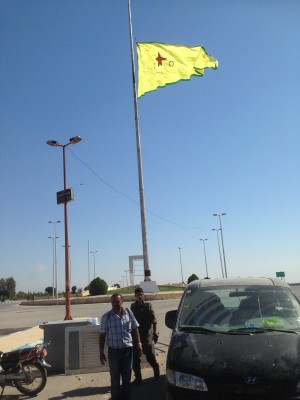
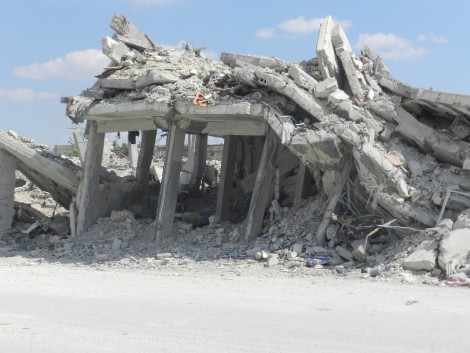
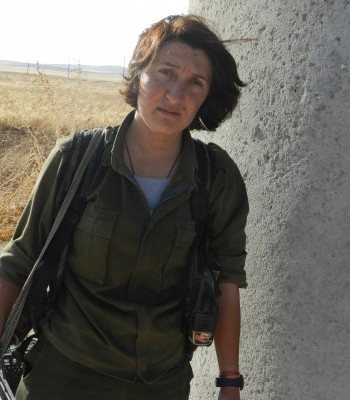

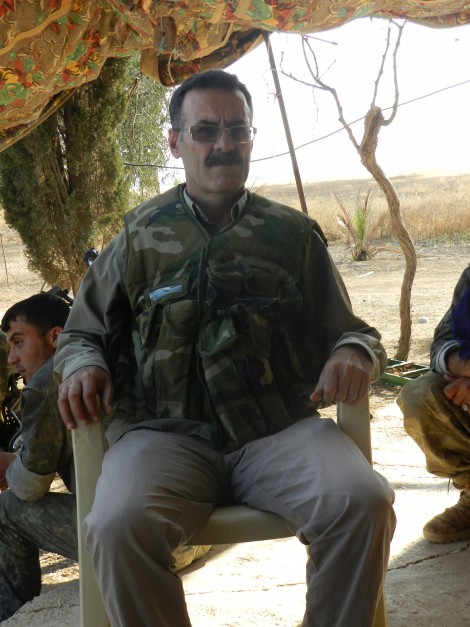
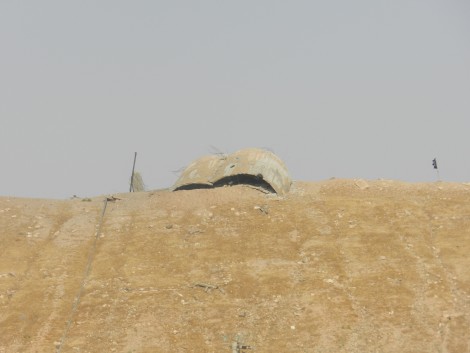
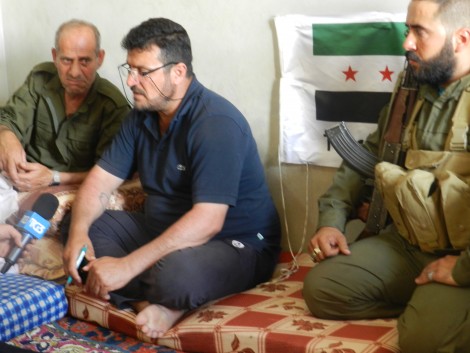

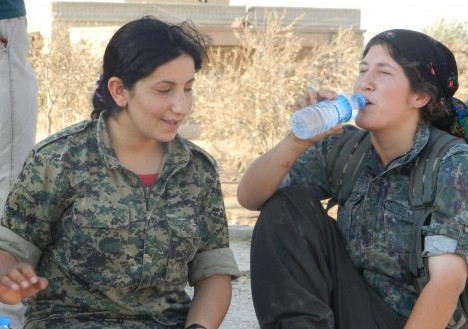

An excellent report, insightful and informative. Not many reports are so current and so topical as is this
Very intriguing story to share with 9 Kurdish Billionaires and 4000+ Millionaires in Iraqi Kurdistan, especially given the current financial crisis:
Riyadh (AFP) – Saudi tycoon Prince Alwaleed bin Talal on Wednesday promised his entire $32 billion (28.8 billion euro) fortune to charitable projects in coming years, in one of the biggest ever such pledges.
http://finance.yahoo.com/news/saudi-prince-alwaleed-pledges-entire-32-bn-fortune-105948149.html
Irans meddling into internal affairs of Iraqi Kurdistan continues to grow. It poses great threat to Kurdish independence.
There are roughly 1000 senior members of Peshmarga Forces in Southern Kurdistan that need to retire.
Why has the merge of all Peshmarga Forces not yet been executed. If KRG is unable, volunteers can contribute!
Good the YPG and YPJ are shown as real people and not crazy supersoldiers like in a video game. If people in the West know we are ordinary people like them, they will want to help us. Jack Fallon is very brave to go to Gire Spi. Thank you